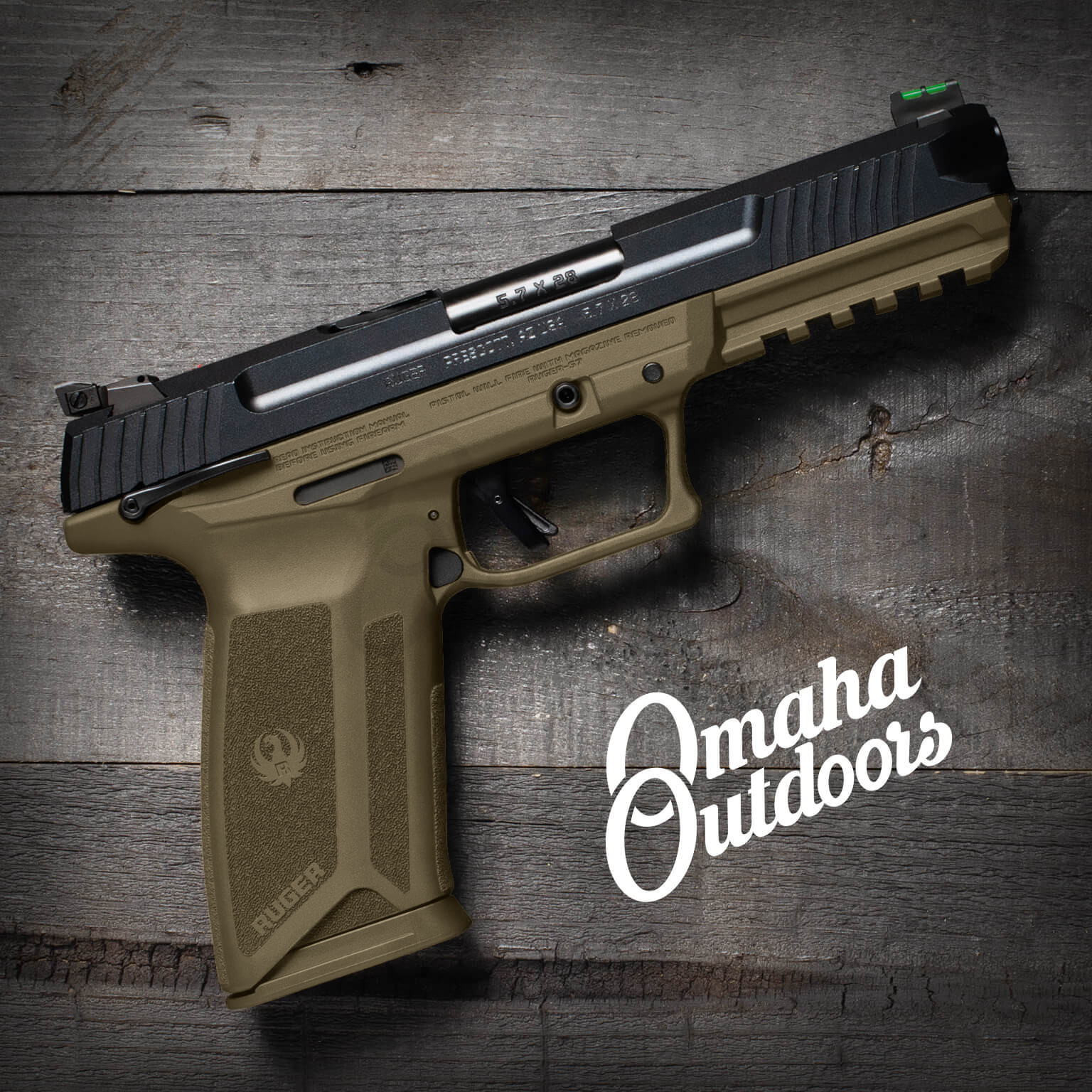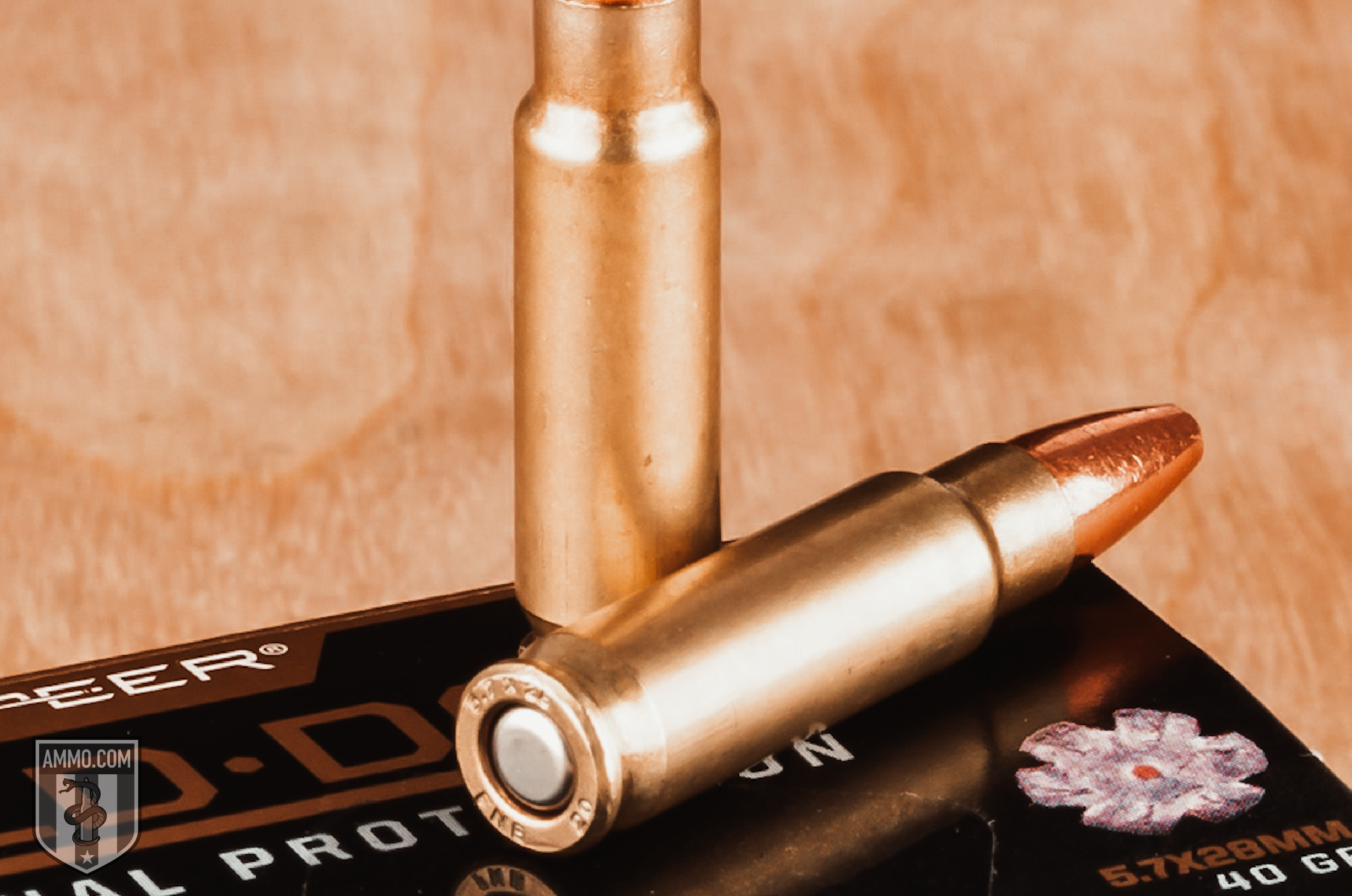57 Pistol Round - The introduction of the Ruger 57 led to renewed interest in the 5.7x28mm round. FN developed the 5.7mm as a self-defense cartridge for the military, primarily for pistols and small arms. This, by the way, is exactly the same as what is loaded with the 9x19mm cartridge, one of the most popular cartridges on the market today. So what (if any) are the advantages of 5.7 vs. 9mm?
We often refer to 9x19mm ammunition as "9mm Luger" and for good reason. The German military wanted a round with more impact, so George Luger enlarged the neck of the existing 7.62x21mm cartridge to make it 9mm in diameter. The P-08 Luger pistol and the 9mm Luger (aka 9mm Parabellum) soon became sought-after icons of World War I and later World War II.
57 Pistol Round

Second-line soldiers soon adapted the Luger rifle for a secondary role, as a self-defense rifle. The "Artillery Luger" had a longer barrel and a more powerful magazine, along with a detachable stock that effectively turned the rifle into a carbine. This, in turn, gave the second line soldiers a better defense system that worked at a distance.
Best Ruger 57 Red Dot [top 8 List]...
Additionally, one of the first practical pistols, the German MP18, used the 9×19 Parabellum round. The 9mm cartridge grew in popularity after World War I, and especially after World War II. It is now one of the most popular tapes in the world. It is the standard pistol cartridge of most armed forces in the world, as well as the standard NATO pistol. The 9mm became the standard revolver for the US military in 1985 when, along with the Beretta 92FS, it replaced the 1911 pistol, which was chambered in .45 ACP.
The widespread military use of the 9mm began to show some of its weaknesses. 9mm is a very effective handgun cartridge and is a very popular handgun cartridge. However, the 9mm was developed before World War I, an area where modern weapons such as anti-bullet weapons were not used to the same extent.
The proliferation of weapons during the Cold War led to an interest in weapons capable of hitting non-bulletproof weapons, such as the M855 5.56 mm round machine gun. Although the 9x19mm worked for non-armored targets, the original weapon was easily disabled. This led to interest in developing a handgun cartridge that would be more effective against firearms than the 9mm round.
Enter the 5.7x28mm round. Fabrique Nationale developed the 5.7mm in response to NATO's need for a second-line field battle rifle cartridge combination. At first glance, this sounds like the same reason the Artillery Luger was created. That's right. However, there was one big difference in the new specifications. NATO's requirement was a cartridge that could penetrate a Tier IIIA weapon at a distance of 200 yards. Because the Tier IIIA was designed to stop the 9mm round, a new type of cartridge was needed. FN Herstal of Belgium developed the 5.7x28mm round, along with the FN Five-SeveN and PS90 rifles to fire it.
Five Seven On 5/7.
Today, 5.7mm body armor is not available to the general public. As such, we're going to compare some of the 5.7mm kits available for sale and see how they stack up against the 9mm. What are some of the advantages of 5.7 vs. 9mm? What are the disadvantages?
Almost universal acceptance and the 70-year-old head of the 5.7 have made the 9mm one of the most popular today. Gun manufacturers around the world produce a variety of 9mm pistols. There are 9mm pistols all over the world, shapes and sizes.
Because of this popularity, the 9mm is relatively inexpensive compared to other centerfire pistols. There are usually several types of ammunition available at any given time.

9mm is also a defensive round. Bullet technology has advanced, while 9mm hollow point ammunition has a proven track record. It is trusted by millions of gun owners around the world.
Ruger 57 Combat/tactical Pistol: 20+1 Rounds Of 5.7x28mm Firepower!
The main advantage is speed, and much more. The 5.7mm round uses lighter weight bullets than the 9mm round. Instead of firing a 115 grain 9mm bullet at 1100 FPS, the 5.7mm fired 40 grains out of the barrel at about 2300 feet per second.
FN has produced a 5.7mm bullet with ballistic characteristics that look more like a rifle bullet than a rifle bullet. The 5.7mm has a pointed tip and a boat-shaped tail that helps it glide through the air, increasing its performance.
The length of 5.7 vs. 9mm makes a difference inside the gun. The 5.7mm diameter is less than 2/3 the diameter of the 9mm. This means you can put more in the magazine. This means more rounds in the magazine of your gun.
The 9mm is not a round made for long range. The shape of the nose is rounded and the shell appears flattened in profile. This is not a mode that is optimized for long shots. For this reason, we use long guns chambered in 9mm in close combat, not long range.
Ruger 57 Gold 10 Round
5.7mm is the new kid on the block. Because of this, there aren't many different weapons available compared to the 9mm. In addition, its best weapon, SS190 ammunition, is not sold to civilians. The SS190 is considered a "weapon piercing" and is prohibited for armed citizens, according to the ATF. On top of that, the cost per round of 5.7 vs. 9mm is about 10% higher, which means a little more bang for your buck (literally).
As mentioned earlier, a pistol chambered in 5.7mm will have more rounds in the magazine than a comparable pistol chambered in 9mm. Recoil will also be lighter at 5.7 vs. 9mm. These two points together make a compelling argument for using the 5.7mm pistol as a self-defense handgun. But how effective are 5.7 vs. 9mm? We will shoot two pistols, a 9mm CZ75 and a 5.7mm Ruger 57, and compare them in three different environments. We will also shoot two different types of ammo in each gun, one steel jacket round and one self defense round. We measured the velocity of each round with the Pro Chrony chronograph to determine the actual muzzle force of each round.
The velocity of a 5.7mm round can be much faster than a 9mm round. However, the light weight of the bullet means that it does not provide the same power that the 9mm round does.

The 9mm round is not known for its recoil, and the all-metal CZ75 helped improve the stock. However, even the mild recoil of the 115 grain round in a larger steel framed gun is more than the Ruger 57. As you can see in the pictures below, the recoil of the CZ75 was mild, but it was even milder than the Ruger.
Mpa57dmg 5.7x28mm Pistol
To test the defensive power of 5.7 vs. 9mm, we shot five samples of each round in Clear Ballistics gel. The current FBI standard for body armor is that the armor must penetrate four layers of heavy clothing and then pass through 18 to 24 inches of ballistic gelatin. To follow these processes as closely as possible, we covered the front of the gel with four layers of heavy fabric and shot the gel from 10 meters.
Five rounds of 124-grain 9mm Sig Sauer JHP Shot 1: 23.125 inches of penetration Shot 2: 23.25 inches of penetration Shot 3: 21.125 inches of penetration Shot 4: 21 inches of penetration Shot 5: 12
30 grains 5.7mm FN JHP Shot 1: 10 inch penetration Shot 2: 10 inch penetration Shot 3: 9.5 inch penetration Shot 4: no/no shot 5: no
We found all the 5.7mm rounds in the gel with the base in the direction they are going. This shows them falling as they pass through the test area. Impact increases the ammo's temporary wound rate. This is a common characteristic for rounds with the same profile as our test ammo. As a result of this shock, two escapees flew into the gel. We chose not to include them in the results. All three spheres we obtained from the gel failed to grow. In addition, the slow collapse greatly reduced any circulation in the medium. This allowed them to narrow down slightly to the FBI's minimum of 16 inches of penetration.
Fn Five Seven
On the other hand, Sig Sauer 9mm bullets all penetrated to 16 inches, and a bit more. The penetration rate of this cycle exceeded the FBI standard. All spheres were amplified in the gel. We successfully put everything back in block.
One of the reasons NATO saw the need to replace the 9mm with something else was to improve performance against Tier IIIA weapons.
Level IIIA armor is designed to protect against gun penetration

Physique 57, $57, 57, 57 cash, round k 57, round grey pill k 57, 57 round gravel, round 57 to the nearest ten, k 57 round pill, vita 57, renaissance 57, 57 534
0 Comments